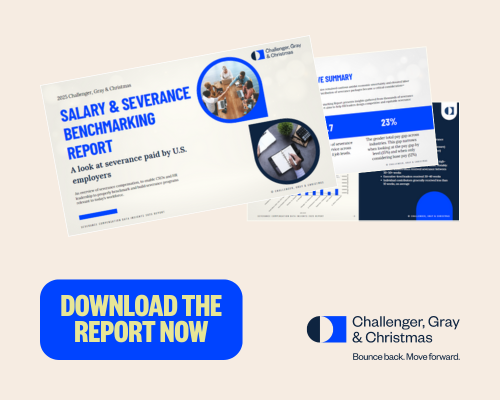
Dec 30 Benchmarking Severance in 2025: What “Competitive” Really Looks Like
Why the smartest HR leaders are rethinking severance as a strategic investment, not a sunk cost.
Severance isn’t just a checkbox for HR or financial line item—it’s a reflection of your company’s values, leadership philosophy, and employer brand. And in 2025, with layoffs at consistently high levels and open positions at newsworthy lows, HR leaders are asking a new question: What does a competitive severance package really look like today?
According to Challenger, Gray & Christmas’ 2025 Severance & Salary Benchmarking Report, which pulled from 2024 data, the average severance across all industries rose to 19.3 weeks, up from 15.6 weeks the prior year. That’s a 24% increase—clear evidence that leading employers are have been investing more in how they offboard people, not less.
Key Takeaways:
- The average severance across industries rose to 19.3 weeks — up nearly 25% year-over-year.
- Hybrid severance models (base + tenure) are becoming the new standard.
- Competitive severance is more than a financial benchmark — it’s a reflection of leadership and brand integrity.
- Benchmarking equips HR leaders to balance cost control, fairness, and reputation with confidence.
The Rise of “Benchmark-Aware” Severance
For years, severance programs varied wildly from company to company, often based more on historical habit than competitive reality. But today’s HR and finance leaders are recognizing that severance benchmarking is as essential as compensation benchmarking.
Our data shows significant differences by role:
- C-suite leaders now average between 30–50+ weeks of severance.
- Vice Presidents and Directors average 15–25 weeks.
- Individual contributors receive less than 10 weeks, on average.
This tiered approach reflects both market norms and leadership responsibility—but it also underscores the growing need for clear, consistent, and equitable policies across job levels.
Why Severance is a Brand Investment
When layoffs happen, how an organization parts ways with employees can either reinforce or damage its reputation.
Generous, well-structured severance programs:
- Protect morale among retained employees
- Reinforce trust between HR and leadership teams
- Reduce litigation risk and negative social media exposure
- Strengthen your employer brand long after the headlines fade
In other words, competitive severance is about more than compliance—it’s about credibility. As one CHRO recently told us, “Our severance policy became our reputation in a single week.”
Data That Drives Confidence
The Challenger 2025 report covers thousands of real-world severance packages across industries—from manufacturing to media—and shows meaningful upward shifts in how companies support outgoing employees.
A few takeaways that every HR leader should note:
- Chemicals, Banking, and Media lead the pack with the highest average severance.
- Regional differences are narrowing as national benchmarking replaces localized norms.
- Hybrid calculation methods (e.g., 8 weeks plus one week per year of service) are becoming the dominant formula across industries.
Together, these trends suggest a more thoughtful, data-backed approach to separation planning—one that balances cost control with dignity and brand stewardship.
From Benchmark to Action
The most forward-thinking HR leaders aren’t just reacting to the data—they’re using it to strengthen their position at the executive table.
Benchmarking severance allows you to:
- Build defensible, equitable policies that align with your company values
- Present credible recommendations to your CFO and legal partners
- Prepare for restructuring decisions before they become urgent
Because when a transition moment arrives, you don’t want to be benchmarking under pressure—you want to be leading with purpose.
Get the Full 2025 Severance & Salary Benchmarking Report
Want to see how your organization compares?
The full 2025 Severance & Salary Benchmarking Report from Challenger, Gray & Christmas provides the data HR leaders need to design competitive, equitable severance programs that protect both people and business.
Download the full report here to access industry-by-industry benchmarks, compensation insights, and actionable takeaways for HR strategy in 2025.

